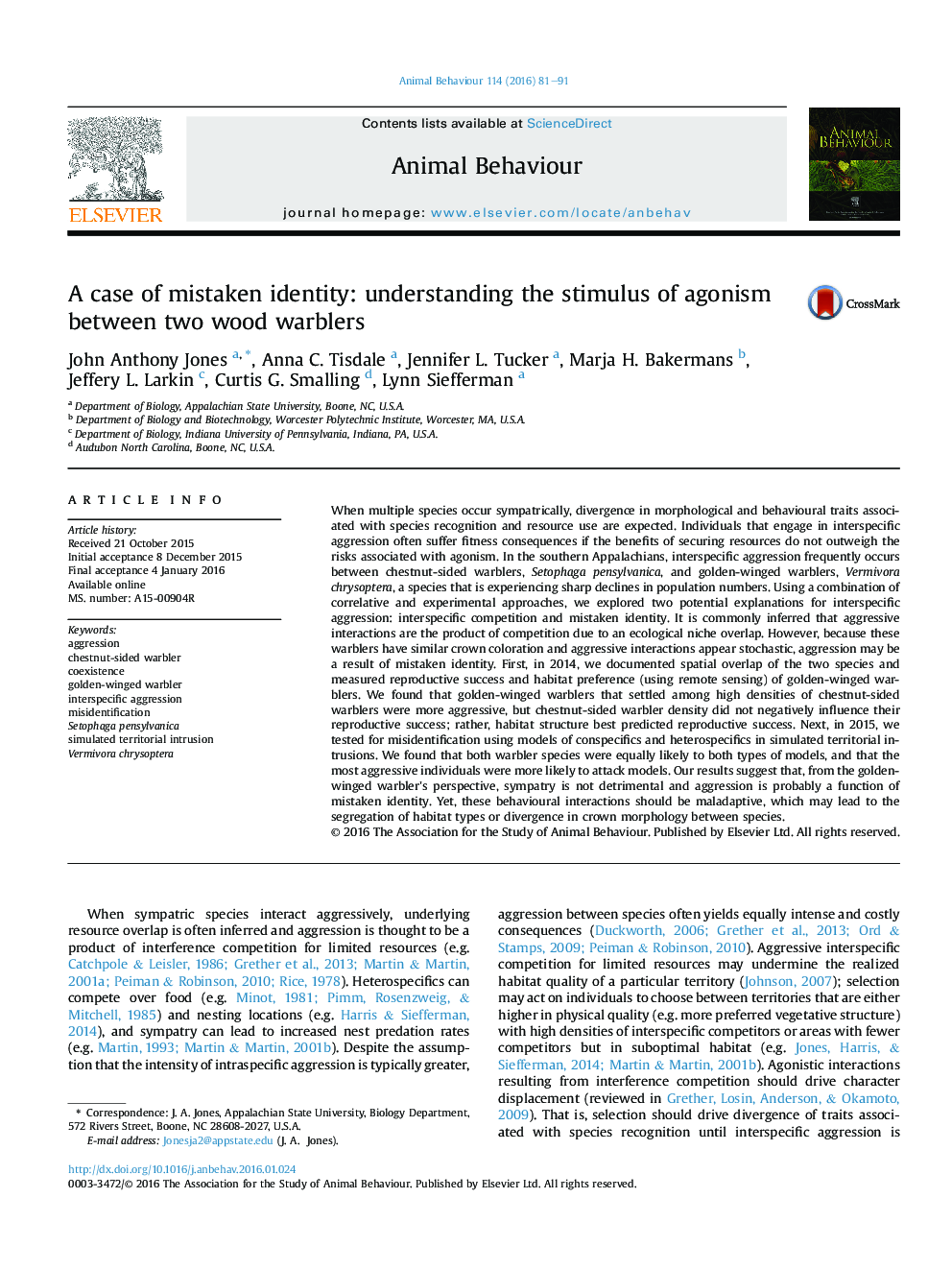| کد مقاله | کد نشریه | سال انتشار | مقاله انگلیسی | نسخه تمام متن |
|---|---|---|---|---|
| 8489176 | 1552214 | 2016 | 11 صفحه PDF | دانلود رایگان |
عنوان انگلیسی مقاله ISI
A case of mistaken identity: understanding the stimulus of agonism between two wood warblers
دانلود مقاله + سفارش ترجمه
دانلود مقاله ISI انگلیسی
رایگان برای ایرانیان
کلمات کلیدی
موضوعات مرتبط
علوم زیستی و بیوفناوری
علوم کشاورزی و بیولوژیک
علوم دامی و جانورشناسی
پیش نمایش صفحه اول مقاله

چکیده انگلیسی
When multiple species occur sympatrically, divergence in morphological and behavioural traits associated with species recognition and resource use are expected. Individuals that engage in interspecific aggression often suffer fitness consequences if the benefits of securing resources do not outweigh the risks associated with agonism. In the southern Appalachians, interspecific aggression frequently occurs between chestnut-sided warblers, Setophaga pensylvanica, and golden-winged warblers, Vermivora chrysoptera, a species that is experiencing sharp declines in population numbers. Using a combination of correlative and experimental approaches, we explored two potential explanations for interspecific aggression: interspecific competition and mistaken identity. It is commonly inferred that aggressive interactions are the product of competition due to an ecological niche overlap. However, because these warblers have similar crown coloration and aggressive interactions appear stochastic, aggression may be a result of mistaken identity. First, in 2014, we documented spatial overlap of the two species and measured reproductive success and habitat preference (using remote sensing) of golden-winged warblers. We found that golden-winged warblers that settled among high densities of chestnut-sided warblers were more aggressive, but chestnut-sided warbler density did not negatively influence their reproductive success; rather, habitat structure best predicted reproductive success. Next, in 2015, we tested for misidentification using models of conspecifics and heterospecifics in simulated territorial intrusions. We found that both warbler species were equally likely to both types of models, and that the most aggressive individuals were more likely to attack models. Our results suggest that, from the golden-winged warbler's perspective, sympatry is not detrimental and aggression is probably a function of mistaken identity. Yet, these behavioural interactions should be maladaptive, which may lead to the segregation of habitat types or divergence in crown morphology between species.
ناشر
Database: Elsevier - ScienceDirect (ساینس دایرکت)
Journal: Animal Behaviour - Volume 114, April 2016, Pages 81-91
Journal: Animal Behaviour - Volume 114, April 2016, Pages 81-91
نویسندگان
John Anthony Jones, Anna C. Tisdale, Jennifer L. Tucker, Marja H. Bakermans, Jeffery L. Larkin, Curtis G. Smalling, Lynn Siefferman,